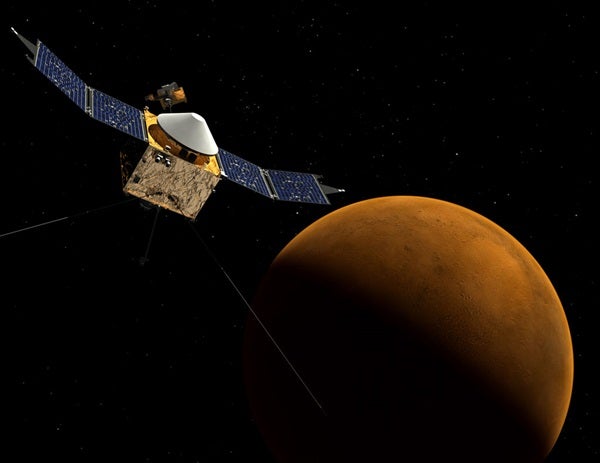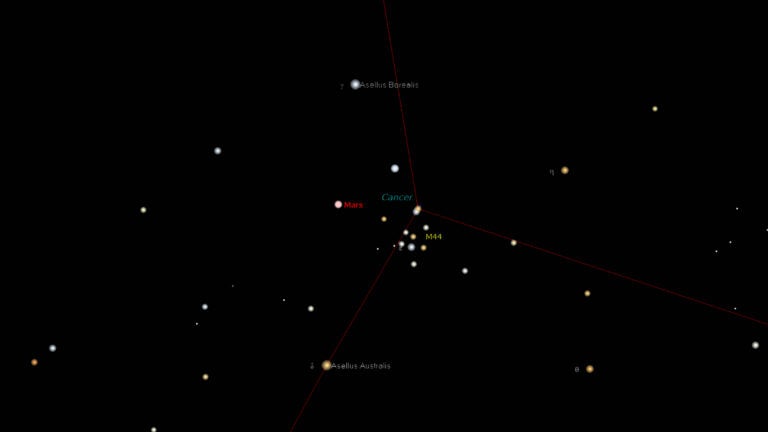NASA’s Mars Atmosphere and Volatile EvolutioN, or MAVEN, mission came back into operation last week after a surprising three-month absence due to an “extended safe mode event,” according to a release from the organization.
MAVEN, which began orbiting Mars in 2014, was performing a routine power cycle of the primary Inertial Measurement Unit, IMU-1. This instrument helps the spacecraft orient itself in space. Following the power cycle, MAVEN encountered difficulties reading the instrument’s orientation and switching to its backup unit, IMU-2, didn’t fix the issue. The spacecraft rebooted itself and was finally able to access IMU-2, then proceeded to operate in safe mode, no longer recording any data while awaiting further action from engineers on Earth.
Follow the stars
For an orbiter like MAVEN, knowing exactly where it is pointed in space is crucial. But this was not the first time IMU-1 has caused problems, according to NASA. In fact, between IMU-1’s erratic behavior and IMU-2’s decreasing lifespan, MAVEN’s team was already developing a software to initiate “all-stellar mode,” a function that uses cameras and pattern recognition of stars in the sky to allow the orbiter to orient itself, rather than the gyroscopes and accelerometers utilized by IMUs. The switchover had been slated for October 2022, a date it turned out that IMU-2 would more than likely not make.
Fortunately, the engineers at Lockheed Martin won the race against time by completing the program several months early, switching the spacecraft to all-stellar mode on April 19. The craft continued to perform limited data collection until the new software had been fully tested, finally resuming normal operations on May 28.
When MAVEN began running in all-stellar mode, IMU-2 was shut down to preserve it for potential future use. And although the new program has been running smoothly, engineers anticipate times throughout the year when the IMUs may still be needed to determine attitude.
MAVEN studies the composition and evolution of Mars’ upper atmosphere. While the mission has already far outlived its initial year-long endeavor, NASA anticipates MAVEN will continue operation for several more years.










